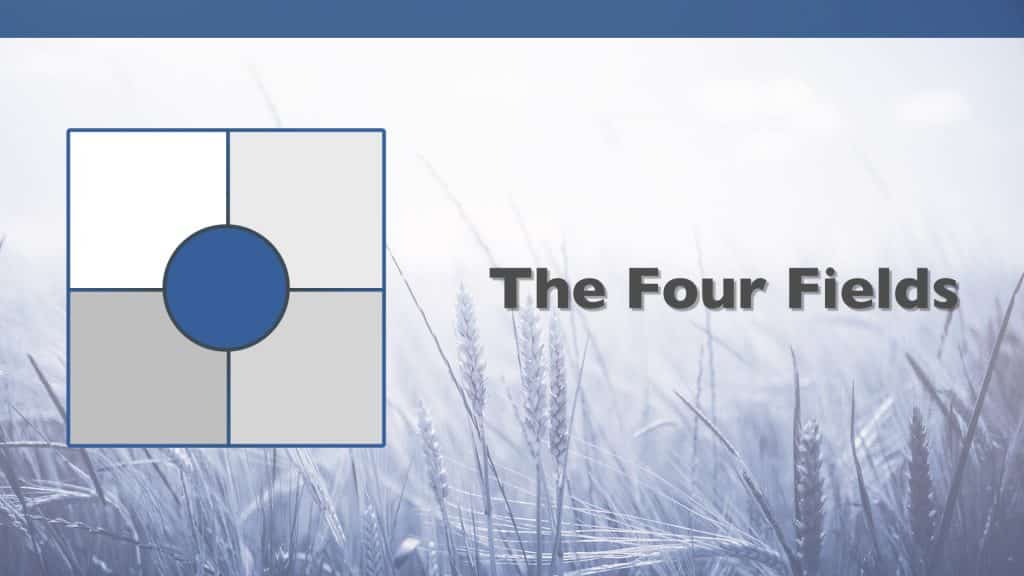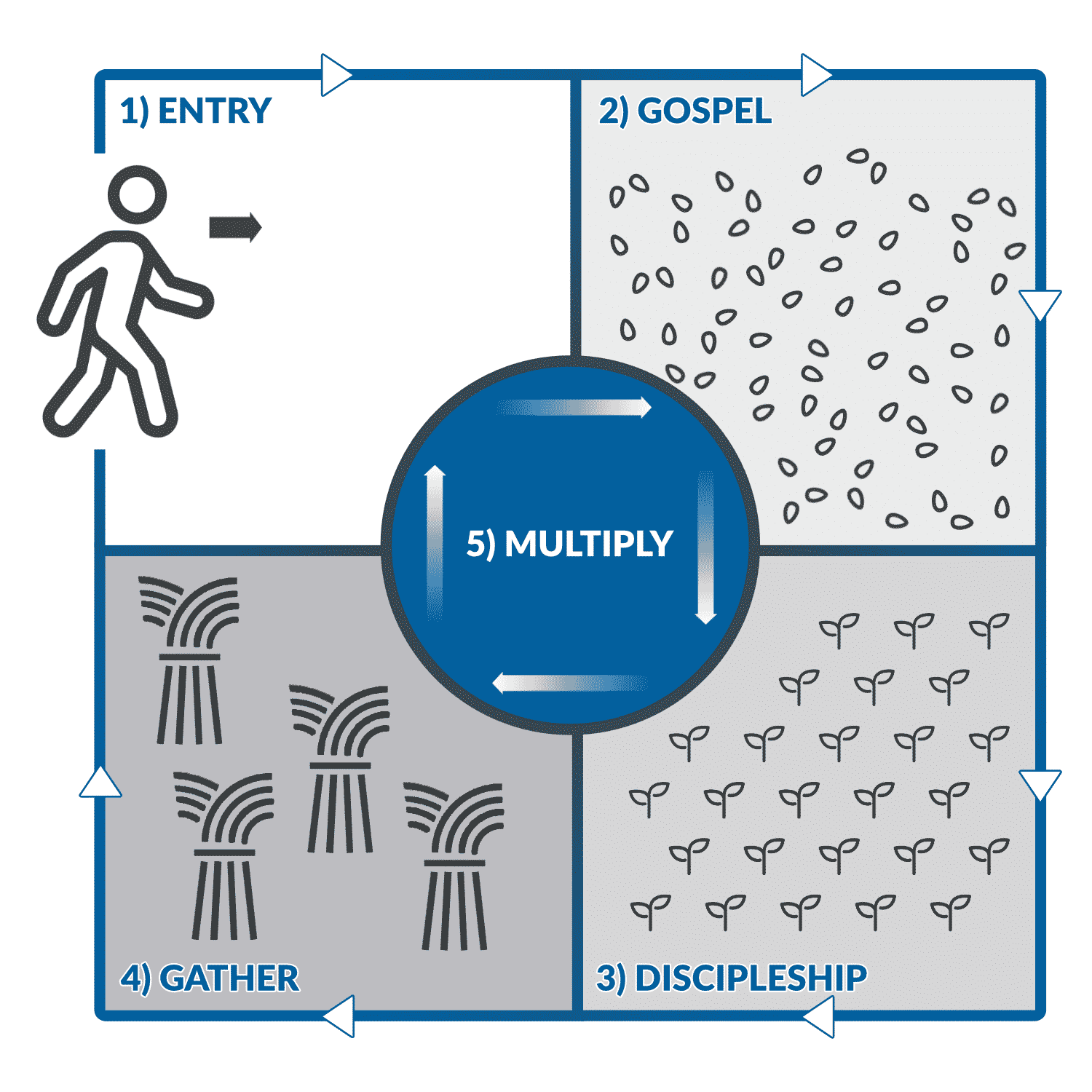
5 Parts / 4 Fields
Recently we were introduced to a disciple-making strategy that’s being used all over the world to train disciples called The Four Fields. It’s based on what Jesus did in his ministry and what his disciples reproduced in the book of Acts. When we look at the strategy used to make disciples in the New Testament, it can easily be described in these 5 parts.
- Entry – Which answers the questions: who do we reach? And how do we engage them?
- Gospel – What is the Gospel? And how do we communicate it in a way that can be easily reproduced?
- Discipleship – How do we nurture those receptive to the Gospel and teach them to obey Jesus?
- Gather – What should the Biblical community we call ‘Church’ look like?
- Multiply – How do we practically develop leaders to bring the Gospel to where they live work and play?
To visualize this, we use The Four Fields:
Entry
Jesus said that a Farmer went out to sew his seed. So there’s a basic entry into an empty field. There’s work to be done. Like a blank canvas or the cursor blinking on a new Word doc. This is a representation that even though the harvest might be plentiful, the workers are few. So who will go? Where will you go? Where is our sphere of influence where we live, work, and play? The empty field represents our mission field. This is where God has called you. So throw seed generously.
Gospel
Once the farmer enters the field, he sews the seed generously. Anywhere and everywhere he can. This represents our mandate of sharing the Good News to all people. It’s a good reminder that we need to be committed to evangelism and training the ninety-nine to go after the one.
Discipleship
Once he sows the seed. The seeds begin to sprout. Now, the farmer doesn’t cause the seed to sprout, but, when it does sprout, he can nurture it, water it, and care for it. The Gospel is taking root. This is well represented by the four types of soils that Jesus refers to. Rocks, Path, Weeds, Good Soil. When we’re spreading the Gospel, we don’t know the soil on which it lands for some time. But those that are receptive to it take root and grow. We’ve spent a lot of time as a network training our church planters to know and share the Kingdom Gospel and intentionally disciple them with reproducible tools through The Bonhoeffer Project.
Gather
At the end of the season, when the harvest comes, the farmer puts the sickle to the harvest and gathers everything into bundles. This picture of the coming together of disciples is what the church should look like. There’s the often-quoted phrase in church planting that “If you make disciples, you always get the church. But if you make a church, you rarely get disciples.” It’s a true Biblical community where equipping and training happens so the saints can do the work of ministry.
Multiply
The farmer then takes some of the seeds from the harvest to be able to go back and sew the next season. And in so doing, he multiplies and facilitates continuous growth. This is the goal. We’re not after a single gathering or church. We’re after churches. A multiplicative movement that extends beyond the four walls of our church to the ends of the earth.
“If you make disciples, you always get the church. But if you make a church, you rarely get disciples.”
Mike Breen – Building a discipling culture
Personal and Corporate Application
One of the reasons I love this tool is that there’s so much depth to each section. It’s a great articulation of what individual discipleship looks like and there are simple tools that can go along with each field.
At the same time, it gives us a road map for what you as a Church Planter should be focused on:
“The intention to make disciples requires a plan, if you have no plan, you don’t really intend to do it.”
Bill Hull – Conversion & discipleship
The variables are many but every discipleship strategy is generally trying to accomplish this. Entry, Gospel, Discipleship, Gather, and Multiply. Understanding this will help us to equip our people to advance the Kingdom and make disciples of ALL NATIONS.



